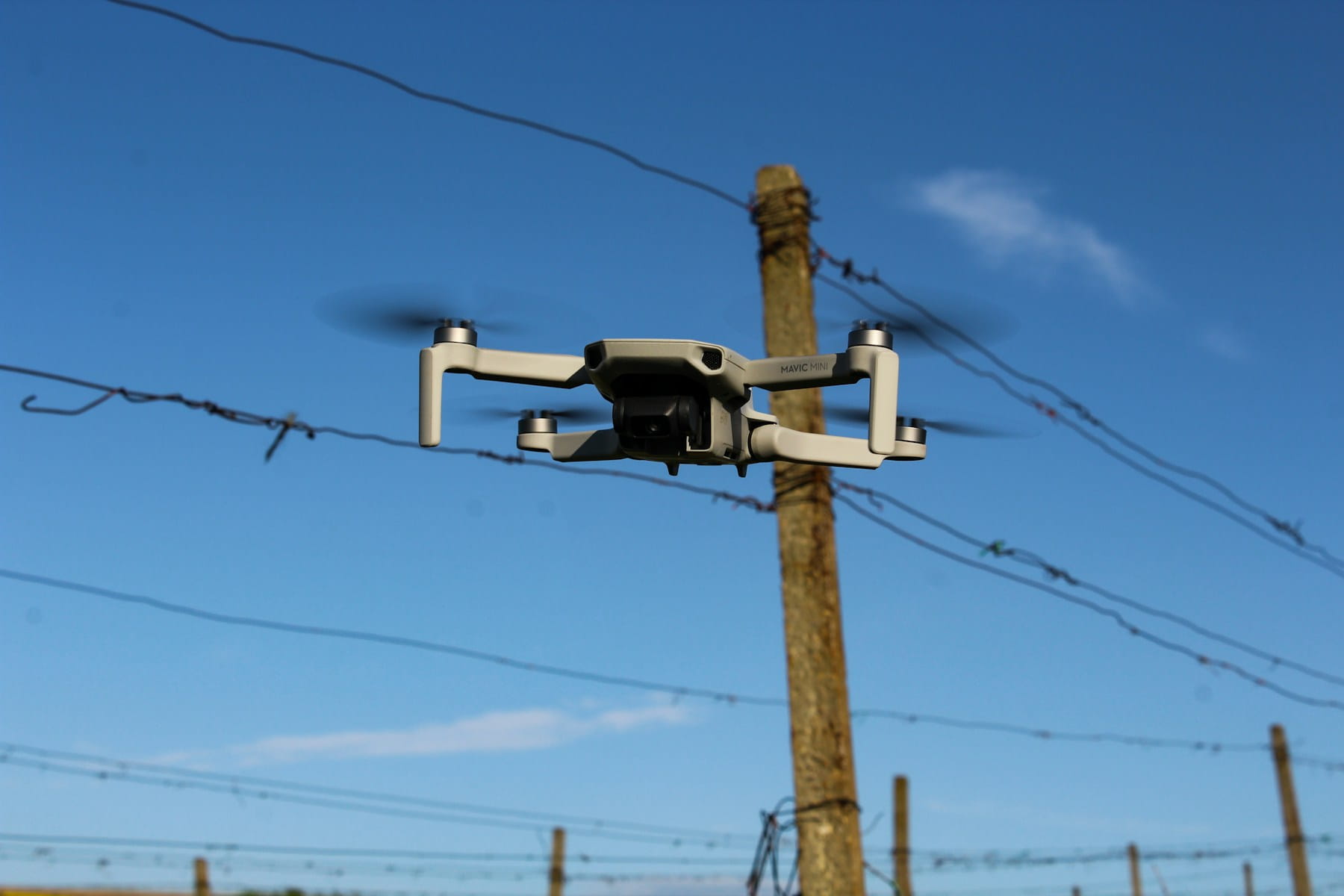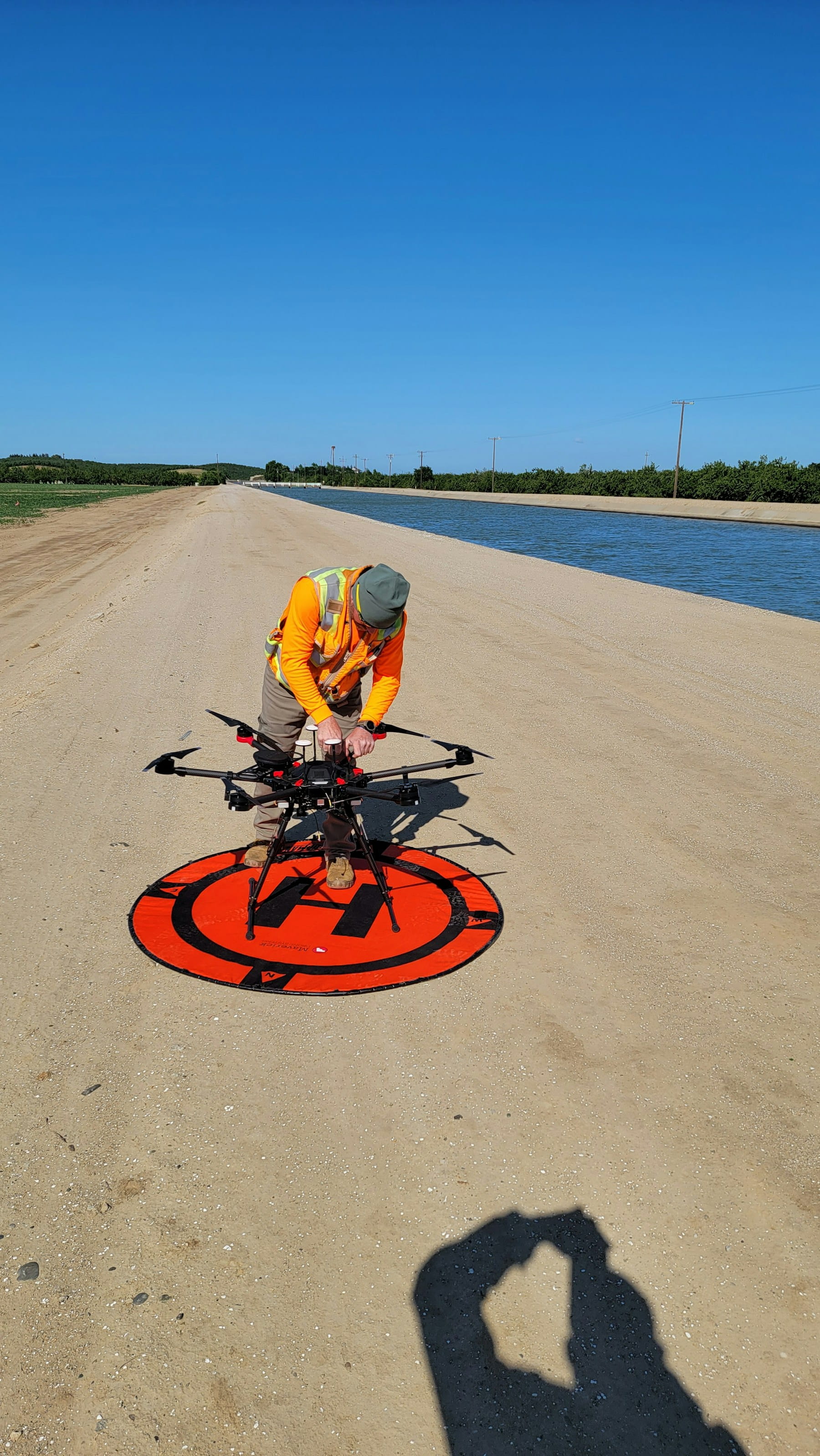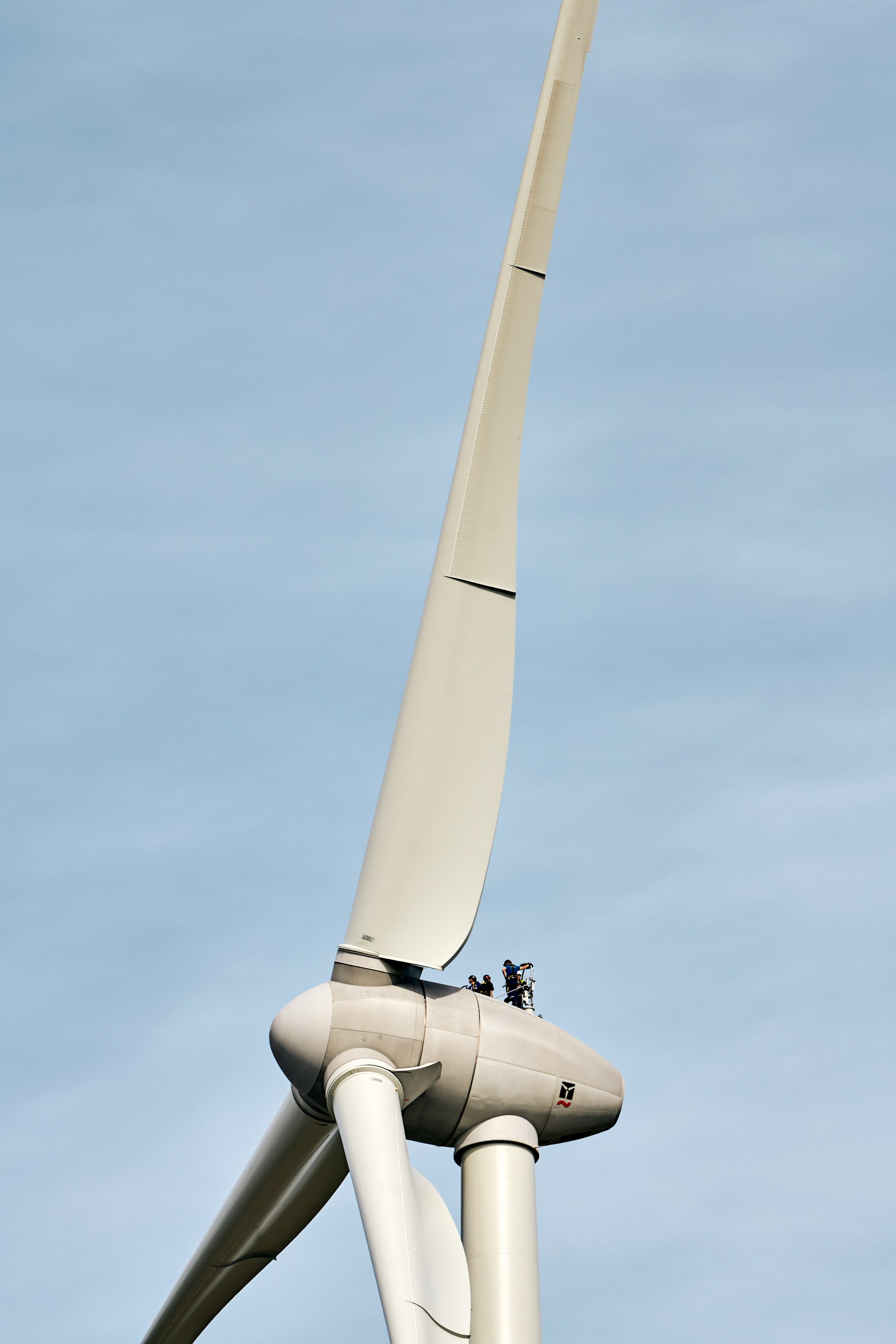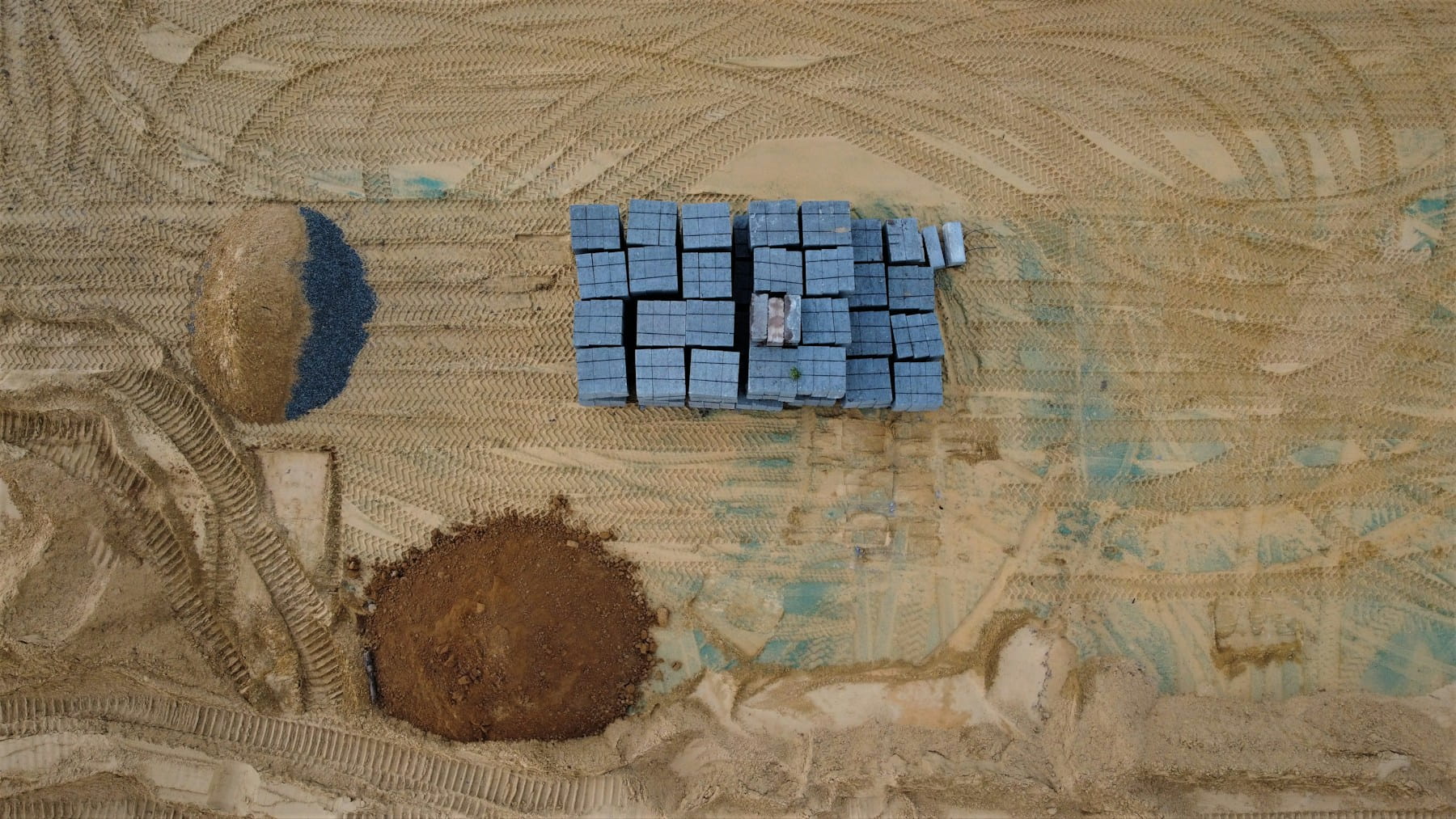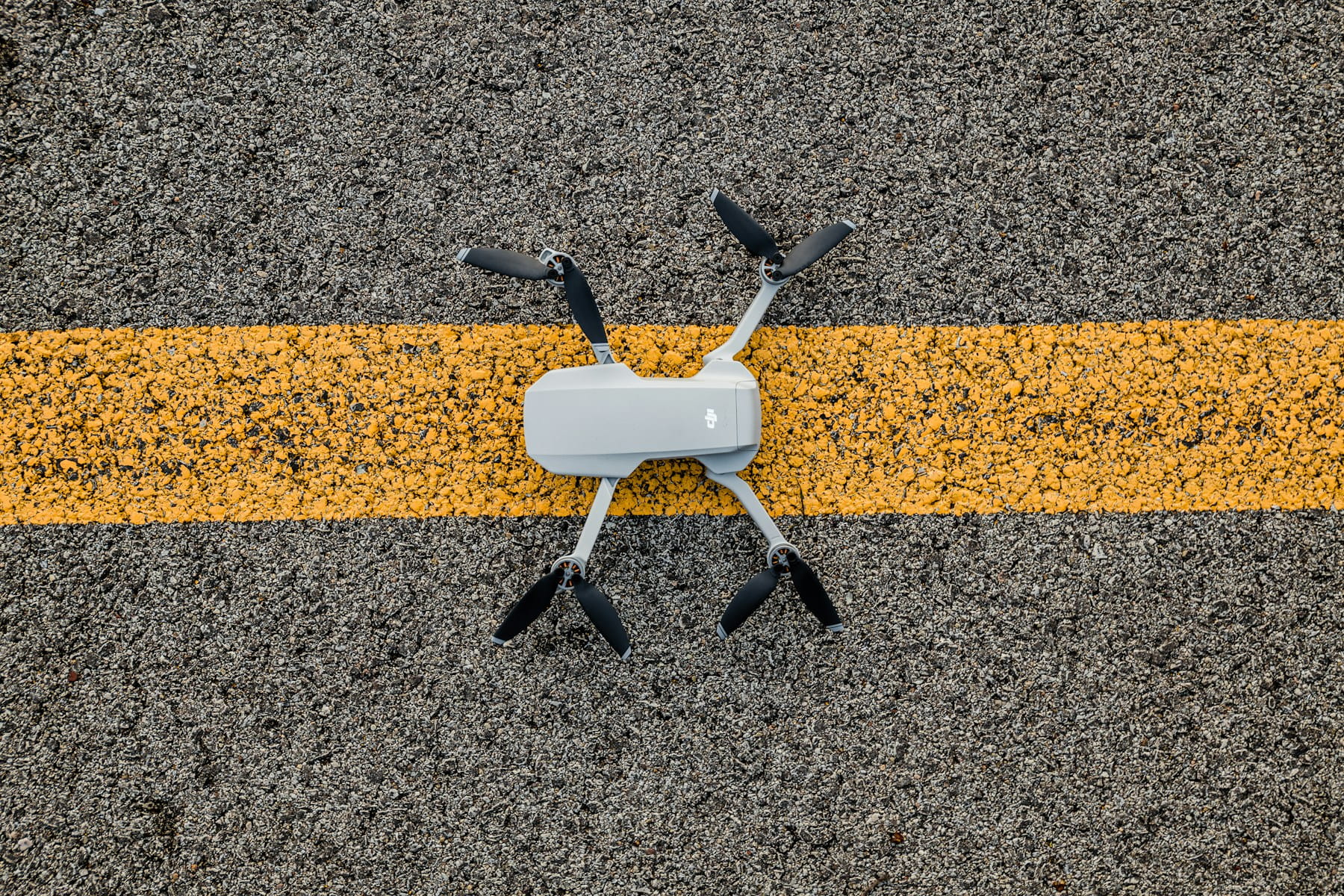Drones for power line inspections enhance safety, efficiency, and data quality, transforming utility maintenance by enabling rapid, cost-effective assessments of infrastructure, vegetation, and electrical anomalies with advanced sensor technologies.
Consider this sobering statistic: electrical utility workers face fatality rates nearly 10 times higher than the average for all occupations, with power line maintenance representing one of the most dangerous jobs in America. Every year, dozens of utility workers die from falls, electrical contact, and helicopter accidents while performing routine infrastructure inspections that keep the lights on for millions.
The traditional approach to power line inspection hasn't fundamentally changed in decades. Teams still climb 200-foot transmission towers in all weather conditions, pilots still navigate helicopters through electromagnetic fields that can interfere with instruments, and ground crews still traverse difficult terrain to reach remote infrastructure. These methods work, but at an enormous cost in safety, efficiency, and resources.
Enter drone technology that's revolutionizing how utilities approach infrastructure inspection. What once required dangerous climbing expeditions or expensive helicopter operations now happens safely from the ground, delivering superior data quality at a fraction of the cost and risk. The transformation isn't just about replacing old methods – it's about enabling inspection frequencies and data analysis capabilities that were previously impossible.
Table of contents
- What is power line drone inspection
- Key benefits of using drones for power line inspections
- Types of drone inspections for power lines
- Sensor technologies used in power line inspections
- The drone inspection process
- Common issues detected during drone inspections
- Regulatory considerations for power line drone inspections
- Choosing the right drone platform
- Challenges and limitations
- Data management and analysis
- Cost analysis: Drones vs traditional methods
- Future trends in power line inspection technology
- Implementation best practices
What is power line drone inspection
Power line drone inspection uses unmanned aircraft systems (UAS) to examine electrical transmission and distribution infrastructure. These specialized operations involve flying drones equipped with cameras, thermal sensors, and other detection equipment along power line corridors to identify potential problems before they cause outages or safety hazards.
The process differs significantly from traditional inspection methods. Instead of sending technicians up towers or deploying expensive helicopter crews, operators can control drones remotely to capture detailed imagery and sensor data. This approach allows for more frequent inspections and provides access to areas that might be difficult or dangerous for human crews to reach.
Modern power line inspection drones can fly predetermined routes using GPS waypoints, automatically maintaining safe distances from energized conductors while capturing consistent, high-quality data. The collected information gets processed through specialized software that can identify anomalies, measure component conditions, and generate detailed inspection reports.
Key benefits of using drones for power line inspections
Enhanced safety for inspection crews
Traditional power line inspections put workers at considerable risk. Climbing towers, working near high-voltage equipment, and operating in challenging terrain all pose serious safety hazards. Drones eliminate most of these risks by keeping personnel on the ground while still providing access to detailed inspection data.
The safety improvements extend beyond just avoiding falls or electrical hazards. Drone inspections can be conducted in weather conditions that might ground helicopter operations or make tower climbing unsafe. This flexibility means utilities can maintain inspection schedules even during challenging conditions.
Increased inspection efficiency
Drones can cover vast stretches of power lines much faster than ground crews. A single drone operation can inspect miles of transmission lines in a fraction of the time required for traditional methods. This efficiency allows utilities to inspect their infrastructure more frequently, catching problems earlier in their development.
The speed advantage becomes particularly valuable during emergency response situations. After storms or other weather events, drones can quickly assess damage across entire service territories, helping utilities prioritize repair crews and restore power more efficiently.
Cost reduction
While the initial investment in drone equipment and training can be substantial, the long-term cost savings are significant. Drone inspections eliminate the need for expensive helicopter rentals, reduce labor costs, and minimize the equipment required for tower-based inspections.
The cost benefits compound over time as utilities can conduct more frequent inspections without proportional increases in expense. This allows for better preventive maintenance, which reduces the likelihood of costly emergency repairs and unplanned outages.
Improved data quality and consistency
Drones capture inspection data in standardized formats, making it easier to compare conditions over time and identify trends. High-resolution cameras and specialized sensors provide detailed information that might be missed during visual inspections from the ground or from helicopters.
The consistency of drone-captured data also improves analysis capabilities. When inspections follow identical flight paths and use the same sensor configurations, utilities can track changes in component conditions with greater precision.
Types of drone inspections for power lines
Routine maintenance inspections
Scheduled inspections form the backbone of proactive power line maintenance programs. These regular assessments help utilities identify developing problems before they cause failures. Drone-based routine inspections can be conducted more frequently than traditional methods, providing better visibility into infrastructure conditions.
Most utilities establish routine inspection cycles based on regulatory requirements, environmental conditions, and equipment age. High-voltage transmission lines might require annual inspections, while distribution systems may follow longer cycles. Drones make it practical to exceed these minimum requirements when conditions warrant additional attention.
Emergency response inspections
Natural disasters, severe weather, and other emergency situations require rapid assessment of power line damage. Drones excel in these scenarios because they can be deployed quickly and operate in conditions that might restrict other inspection methods.
Storm damage assessments represent one of the most valuable applications of drone technology for utilities. Following severe weather events, drones can survey entire service territories, identifying damaged structures, downed lines, and blocked access routes. This information helps dispatchers deploy repair crews more effectively and provides customers with better estimates for power restoration.
Vegetation management inspections
Trees and other vegetation growing too close to power lines represent a major cause of outages and fire risks. Drones equipped with high-resolution cameras and LiDAR sensors can identify vegetation encroachment with remarkable precision, helping utilities plan tree trimming and removal operations.
These inspections are particularly valuable in areas with rapid vegetation growth or difficult access. Drones can monitor vegetation conditions throughout the growing season, allowing utilities to schedule maintenance work before problems develop.
Post-maintenance verification
After completing maintenance work on power line infrastructure, utilities need to verify that repairs were completed properly and that systems are ready for service. Drones provide an efficient way to conduct these verification inspections, documenting completed work and identifying any additional issues that may have been discovered during repairs.
Sensor technologies used in power line inspections
Visible light cameras
High-resolution RGB cameras capture detailed visual imagery of power line components, providing the foundation for most drone inspection programs. These cameras document the physical condition of structures, conductors, insulators, and other equipment.
Modern inspection drones typically use cameras with resolutions of 20 megapixels or higher, enabling detailed analysis of component conditions. Some systems include zoom capabilities, allowing operators to focus on specific areas of interest without repositioning the aircraft.
The following table outlines key specifications for visible light cameras used in power line inspections:
| Specification | Typical Range | Purpose |
|---|---|---|
| Resolution | 20-50 megapixels | Detailed component analysis |
| Zoom capability | 10x-30x optical | Close examination of specific areas |
| Image stabilization | 3-axis gimbal | Sharp images during flight |
| Video recording | 4K-8K resolution | Continuous corridor documentation |
Thermal imaging cameras
Thermal cameras detect temperature variations that indicate electrical problems, mechanical issues, or other anomalies not visible to the naked eye. Hot spots in electrical connections often signal developing failures that could lead to outages or equipment damage.
These sensors prove particularly valuable for inspecting energized equipment that cannot be easily accessed for physical examination. Thermal imaging can identify problems with insulators, transformers, switches, and conductor connections while the equipment remains in service.
LiDAR sensors
Light Detection and Ranging (LiDAR) technology creates detailed three-dimensional maps of power line corridors, measuring precise distances between conductors and surrounding objects. This capability is especially valuable for vegetation management and clearance verification.
LiDAR sensors can detect vegetation encroachment with centimeter-level accuracy, helping utilities identify clearance violations before they cause problems. The technology also provides precise measurements of conductor sag, tower geometry, and structural deflections.
Multispectral and hyperspectral imaging
Advanced imaging systems capture data across multiple wavelengths of light, revealing information not available through standard photography. These sensors excel at vegetation analysis, helping utilities assess plant health and growth patterns near power lines.
Multispectral imaging can distinguish between different types of vegetation, identify stressed or diseased plants, and predict growth patterns that might affect power line clearances. This information supports more targeted vegetation management programs.
The drone inspection process
Mission planning and preparation
Successful power line inspections begin with careful mission planning. Operators must consider flight paths, weather conditions, regulatory requirements, and safety protocols before launching any inspection mission.
Flight planning software helps operators design efficient inspection routes that maintain safe distances from energized equipment while capturing complete coverage of the target infrastructure. Comprehensive mission planning approaches automatically generate waypoint-based flight plans that ensure consistent data collection across multiple inspection cycles.
Pre-flight safety briefings cover potential hazards, emergency procedures, and communication protocols. Inspection crews coordinate with utility control centers to ensure that planned flights won't interfere with maintenance activities or create safety risks for ground personnel.
Data collection procedures
During inspection flights, drones follow predetermined routes while automatically capturing images and sensor data at specified intervals. Operators monitor flight progress and can adjust collection parameters based on field conditions or specific areas of interest.
Most inspection systems use automated data collection to ensure consistency and completeness. GPS coordinates link each image to specific locations along the power line corridor, making it easier to locate and track component conditions over time.
Ground crews often accompany drone operations to provide additional safety oversight and handle any situations that require immediate attention. This coordination ensures that inspection teams can respond quickly to discovered problems or changing field conditions.
Real-time monitoring and control
Advanced drone systems provide real-time video feeds and telemetry data, allowing operators to monitor flight progress and adjust collection parameters as needed. This capability enables immediate response to discovered problems or changing conditions.
Some inspection programs use multiple drones simultaneously to cover large areas more quickly or provide different perspectives on complex infrastructure. Coordinated multi-drone operations require sophisticated flight management systems and experienced operators.
Common issues detected during drone inspections
Structural problems
Drone inspections excel at identifying structural issues that might not be visible from ground level. Cracked insulators, damaged cross-arms, corroded hardware, and bent or damaged conductors all show up clearly in high-resolution imagery.
Early detection of structural problems allows utilities to schedule repairs during planned outages rather than waiting for emergency failures. This proactive approach reduces customer impacts and helps maintain system reliability.
Electrical anomalies
Thermal imaging reveals electrical problems that often precede equipment failures. Hot spots in connections, overloaded components, and developing faults appear as temperature anomalies in thermal imagery.
These electrical issues typically develop gradually, making them difficult to detect through traditional inspection methods. Drone-mounted thermal sensors can identify problems in their early stages when repairs are less expensive and disruptive.
Vegetation encroachment
Trees, vines, and other vegetation growing too close to power lines represent a major reliability concern. Drone-mounted cameras and LiDAR sensors can identify encroachment issues with remarkable precision, supporting more effective vegetation management programs.
Seasonal vegetation monitoring helps utilities track growth patterns and plan trimming activities more effectively. Some advanced systems can predict future encroachment based on current growth rates and environmental conditions.
Corrosion and wear
Metal components exposed to weather gradually deteriorate through corrosion and mechanical wear. High-resolution imaging can document these changes, helping utilities track component life cycles and plan replacement activities.
Coastal and industrial areas often accelerate corrosion processes, making regular monitoring particularly important in these environments. Drone inspections provide consistent documentation of component conditions, supporting data-driven maintenance decisions.
Regulatory considerations for power line drone inspections
Federal Aviation Administration requirements
Power line inspections must comply with Federal Aviation Administration (FAA) regulations governing drone operations. Most utility inspections require professional pilot training and Remote Pilot Certificates, operating under Part 107 rules or specific waivers for more complex operations.
Operations near power lines often require special authorizations due to the critical nature of electrical infrastructure. Some inspections may qualify for public aircraft operations exemptions, while others need specific operational waivers to conduct safe and effective inspections.
Airspace coordination
Power line corridors often cross multiple types of airspace, requiring coordination with air traffic control and other aviation authorities. Understanding NOTAM procedures helps inspection teams coordinate appropriately and prevent conflicts with other airspace users.
Some utility corridors pass near airports or through restricted airspace, creating additional coordination requirements. Advanced planning and communication help ensure that inspection operations can be conducted safely and legally.
Utility industry standards
Beyond aviation regulations, power line drone inspections must meet utility industry standards for equipment inspection and maintenance. These standards specify inspection frequencies, documentation requirements, and qualification criteria for inspection personnel.
Industry organizations like the Institute of Electrical and Electronics Engineers (IEEE) and the North American Electric Reliability Corporation (NERC) provide guidance on drone inspection procedures and standards.
Choosing the right drone platform
Fixed-wing vs multirotor aircraft
The choice between fixed-wing and multirotor drones depends on inspection requirements, corridor characteristics, and operational preferences. Each platform type offers distinct advantages for different applications.
Fixed-wing aircraft provide longer flight times and can cover greater distances on single missions. These platforms work well for long transmission line corridors where speed and endurance are priorities. However, they require more space for takeoff and landing and may have difficulty with detailed inspection of specific components.
Multirotor drones offer greater maneuverability and can hover for detailed examination of specific equipment. These platforms excel at close-up inspections and work well in confined spaces or areas with obstacles. Flight times are typically shorter than fixed-wing aircraft, but the precision capabilities often justify the trade-off.
Payload considerations
Sensor payload requirements significantly influence drone platform selection. High-resolution cameras, thermal imagers, and LiDAR sensors all add weight and power consumption that must be balanced against flight performance requirements.
Some inspection programs use multiple smaller drones with specialized sensor packages rather than single large platforms carrying all sensors. This approach provides operational flexibility and reduces the impact of equipment failures on inspection schedules.
Operational environment factors
Environmental conditions along power line corridors vary significantly and influence platform selection. Mountainous terrain, coastal areas, desert environments, and urban settings each present unique challenges for drone operations.
Wind conditions, temperature extremes, and precipitation all affect drone performance and safety. Platforms selected for power line inspections must be capable of operating safely in the environmental conditions typical of their assigned service territories.
Challenges and limitations
Weather dependencies
Weather conditions significantly impact drone inspection operations. High winds, precipitation, low visibility, and extreme temperatures can all prevent safe flight operations or degrade data quality.
Utility inspection programs must account for weather limitations when planning inspection schedules. Some regions may have limited windows for drone operations during certain seasons, requiring careful coordination with maintenance planning cycles.
Technical limitations
Current drone technology has limitations that affect inspection capabilities. Battery life restricts flight duration, payload capacity limits sensor options, and communication range can constrain operational areas.
These limitations continue to improve as technology advances, but they currently require operational accommodations. Inspection programs often need multiple flights or specialized equipment to complete comprehensive inspections of large infrastructure systems.
Interference and signal challenges
Power line environments can create electromagnetic interference that affects drone communications and navigation systems. High-voltage transmission lines generate electrical fields that may interfere with GPS signals or control links.
Experienced operators learn to recognize and mitigate these interference issues, but they require specialized training and equipment modifications. Some inspection systems use backup communication methods or autonomous flight capabilities to address signal challenges.
Data management complexity
Power line inspections generate enormous amounts of data that must be processed, analyzed, and stored efficiently. High-resolution imagery, thermal data, and sensor measurements create storage and bandwidth challenges for many organizations.
Cloud-based processing systems help manage data volumes, but they require reliable internet connections and careful attention to data security requirements. Some utilities prefer on-premises processing to maintain control over sensitive infrastructure information.
Data management and analysis
Processing workflows
Efficient data processing workflows are crucial for extracting value from drone inspection data. Automated systems can handle routine data processing tasks, while specialist analysts focus on identifying and evaluating anomalies.
Machine learning algorithms increasingly support automated defect detection, helping analysts prioritize their attention on the most critical issues. These systems continue to improve as they process more inspection data and learn to recognize patterns associated with different types of problems.
Integration with asset management systems
Inspection data becomes most valuable when integrated with existing asset management and maintenance planning systems. This integration with comprehensive fleet management allows utilities to track component conditions over time and make data-driven decisions about maintenance priorities.
Modern asset management platforms can automatically import drone inspection results and link them to specific equipment records. This capability supports trend analysis, predictive maintenance planning, and regulatory compliance reporting.
Quality control procedures
Consistent data quality requires systematic quality control procedures that verify completeness, accuracy, and consistency of inspection results. These procedures should address both technical data quality and operational compliance requirements.
Regular calibration of sensors, validation of processing algorithms, and verification of inspection procedures help maintain data quality standards. Quality control systems should flag potential issues early in the processing workflow to prevent errors from affecting downstream analysis.
Cost analysis: Drones vs traditional methods
Initial investment requirements
Implementing drone inspection programs requires significant upfront investment in equipment, training, and operational infrastructure. However, these costs are typically much lower than the long-term expenses associated with traditional inspection methods.
The following table compares typical cost elements for drone vs traditional inspection programs:
| Cost Element | Drone Program | Traditional Methods |
|---|---|---|
| Equipment purchase | $50,000-200,000 | $500,000-2,000,000 |
| Annual operating costs | $100,000-300,000 | $800,000-1,500,000 |
| Personnel training | $20,000-50,000 | $50,000-100,000 |
| Insurance and liability | $10,000-25,000 | $100,000-200,000 |
Operational cost comparisons
Ongoing operational costs favor drone programs significantly over traditional inspection methods. Reduced labor requirements, elimination of helicopter rentals, and lower equipment maintenance costs create substantial annual savings.
The cost advantages become more pronounced as inspection frequencies increase. Traditional methods make frequent inspections prohibitively expensive, while drone costs scale more favorably with increased inspection frequency.
Return on investment calculations
Most utilities see positive returns on drone inspection investments within 2-3 years of implementation. The exact payback period depends on system size, inspection frequency, and the cost of traditional methods being replaced.
Beyond direct cost savings, drone inspections often provide indirect benefits through improved reliability, reduced emergency repair costs, and better regulatory compliance. These benefits can significantly enhance the overall return on investment.
Future trends in power line inspection technology
Artificial intelligence integration
Machine learning and artificial intelligence technologies are becoming increasingly sophisticated at identifying problems in inspection data. These systems can process thousands of images quickly, flagging potential issues for human review.
AI-powered analysis systems continue to improve as they process more data and learn to recognize subtle patterns associated with developing problems. Future systems may be able to predict equipment failures based on inspection trends and environmental factors.
Autonomous inspection systems
Fully autonomous drone inspection systems are under development that can conduct routine inspections with minimal human intervention. These systems would automatically plan flights, collect data, and generate inspection reports.
Autonomous systems promise to reduce operational costs further while enabling more frequent inspections. However, regulatory approval and safety validation remain significant challenges for widespread deployment.
Advanced sensor technologies
New sensor technologies continue to emerge that provide additional inspection capabilities. Acoustic sensors can detect corona discharge, gas detectors can identify equipment leaks, and advanced imaging systems can reveal problems invisible to current sensors.
Integration of multiple sensor types on single platforms will provide more comprehensive inspection capabilities while maintaining operational efficiency. These multi-sensor systems will generate even more data, requiring continued advances in processing and analysis capabilities.
Integration with smart grid systems
Future power line inspection systems will likely integrate closely with smart grid monitoring and control systems. Real-time condition data from drone inspections could feed directly into grid management systems, enabling immediate response to developing problems.
This integration would create feedback loops between inspection results and operational decisions, optimizing both system reliability and maintenance efficiency. Advanced analytics could correlate inspection findings with operational data to predict and prevent problems.
Implementation best practices
Staff training and certification
Successful drone inspection programs require comprehensive training for pilots, data analysts, and support personnel. Training should cover not only technical skills but also safety procedures, regulatory compliance, and emergency response.
Many utilities partner with specialized training organizations or equipment manufacturers to develop customized training programs. Ongoing training is important as technology evolves and operational experience reveals new best practices.
Safety protocol development
Comprehensive safety protocols are crucial for safe and effective drone operations near energized power lines. These protocols should address pre-flight planning, operational procedures, emergency response, and coordination with other utility activities. Systematic risk assessment helps identify and mitigate unique hazards associated with power line environments.
Safety protocols must be regularly reviewed and updated based on operational experience and changing regulations. Regular safety training and drills help ensure that all personnel understand and follow established procedures.
Vendor selection criteria
Choosing the right equipment vendors and service providers significantly impacts program success. Evaluation criteria should include technical capabilities, industry experience, training and support offerings, and long-term viability.
Many utilities start with pilot programs to evaluate different vendors and approaches before committing to full-scale implementations. This approach allows for learning and adjustment before making major investments.
Implementation Considerations
Power line drone inspection programs require systematic implementation that addresses safety protocols, regulatory compliance, and integration with existing utility operations. Organizations deploying these systems benefit from comprehensive platforms that combine inspection management with established asset management and compliance tracking capabilities.
Successful implementations often begin with pilot programs on less critical infrastructure before expanding to transmission lines and substations. This progressive approach allows teams to develop expertise while demonstrating value to stakeholders and building confidence in drone-based inspection capabilities.
In Summary
Drones have fundamentally transformed power line inspections by eliminating the safety risks and cost barriers that limited traditional inspection methods. The technology delivers superior data quality through thermal imaging and LiDAR sensors while enabling inspection frequencies that support predictive maintenance strategies.
The transition from climbing-based and helicopter inspections represents more than cost savings – it enables utility companies to implement comprehensive monitoring programs that were previously impossible. Organizations that master drone inspection capabilities position themselves for improved reliability, reduced maintenance costs, and enhanced safety performance.
Success in modern utility infrastructure management requires embracing technologies that improve safety while delivering superior operational data. Drone inspections represent the perfect convergence of safety enhancement, cost reduction, and performance improvement.
Ready to Transform Your Utility Inspection Program?
Join utility companies who have revolutionized their infrastructure inspection capabilities through systematic drone deployment and operational excellence. Whether you're managing distribution systems or transmission networks, comprehensive inspection management provides the foundation for safe, efficient, and cost-effective utility operations.
Start your free trial today — no credit card required. Or book a demo to see how DroneBundle integrates power line inspection workflows with compliance management, fleet coordination, and mission planning in a platform designed specifically for professional utility operations.
